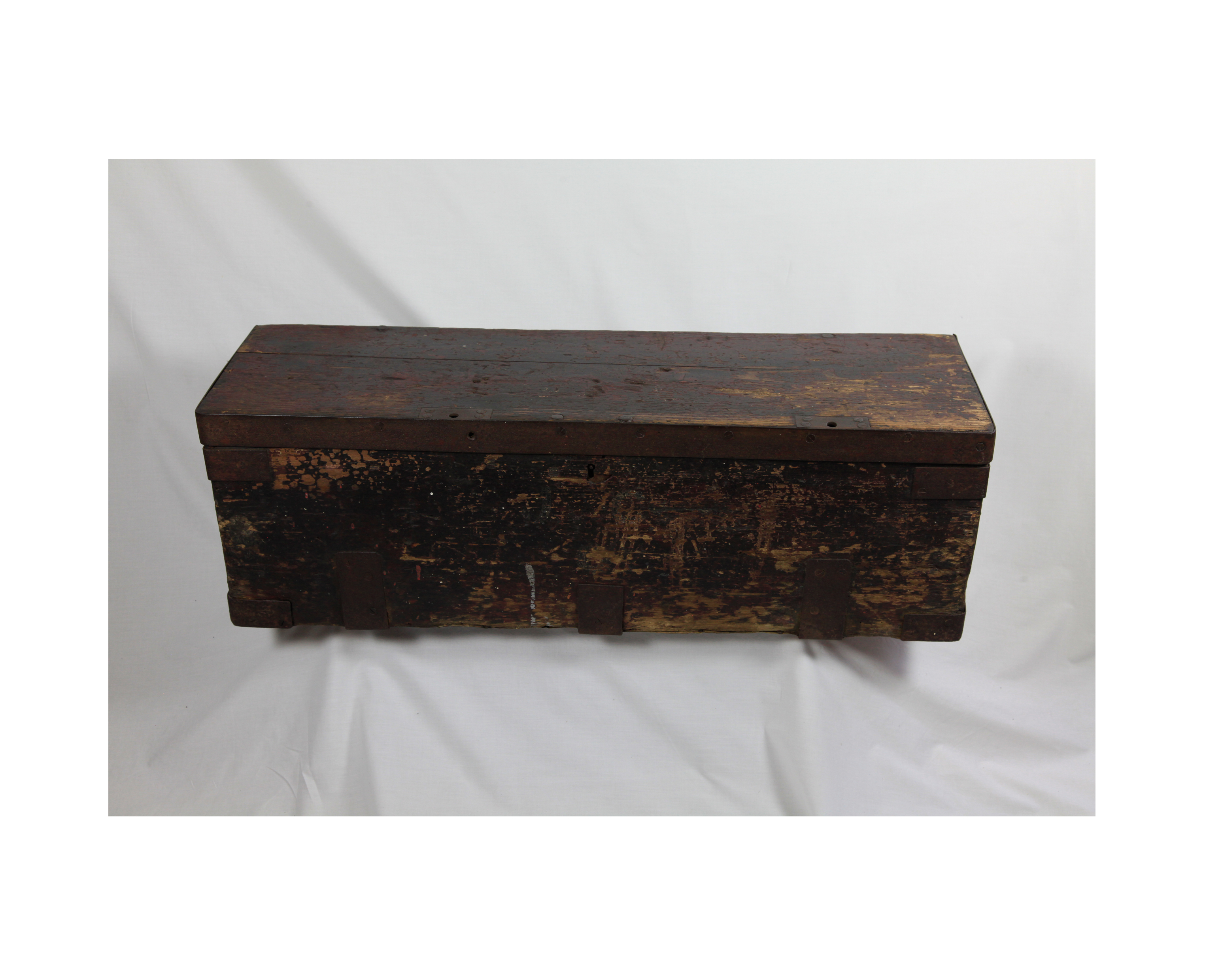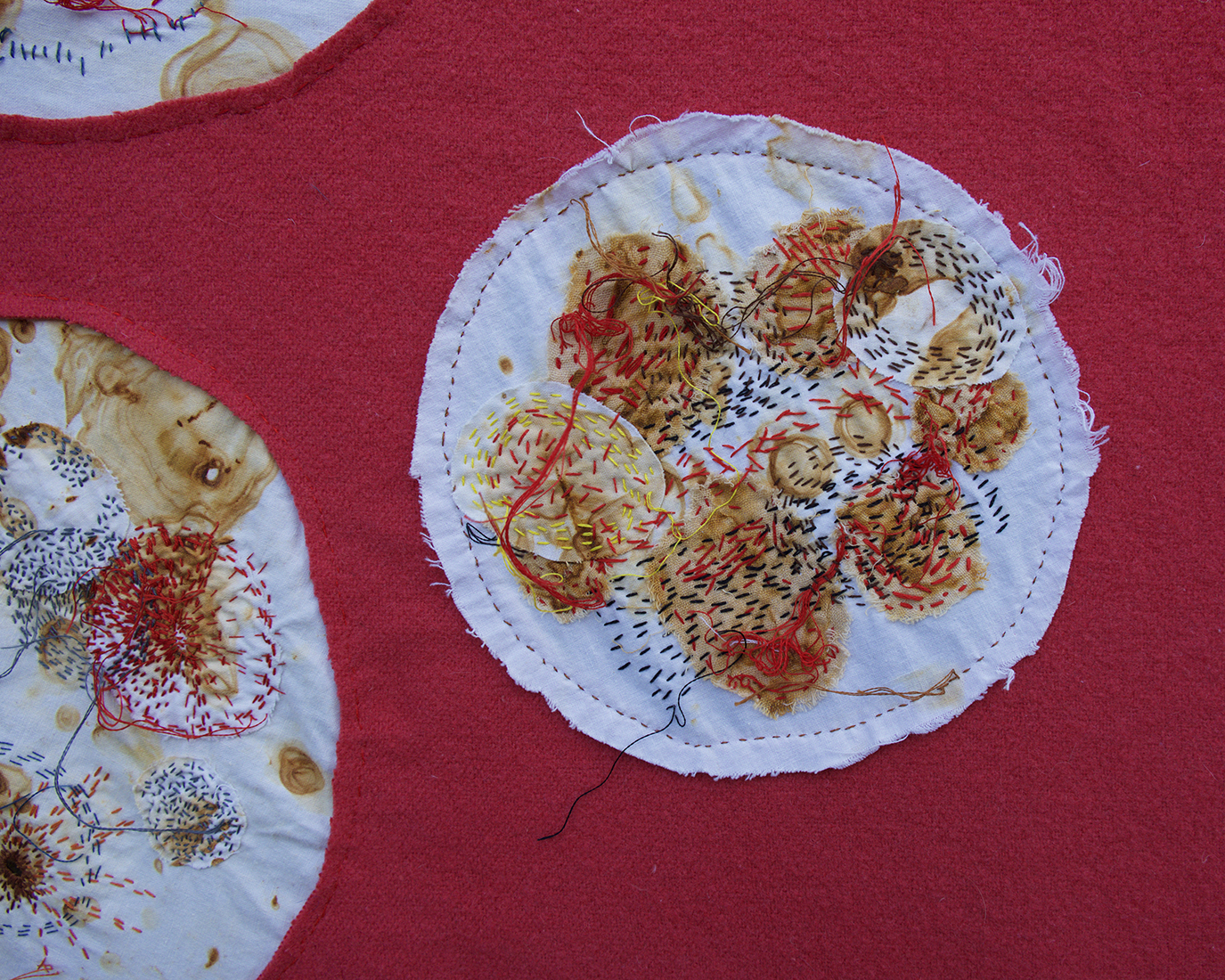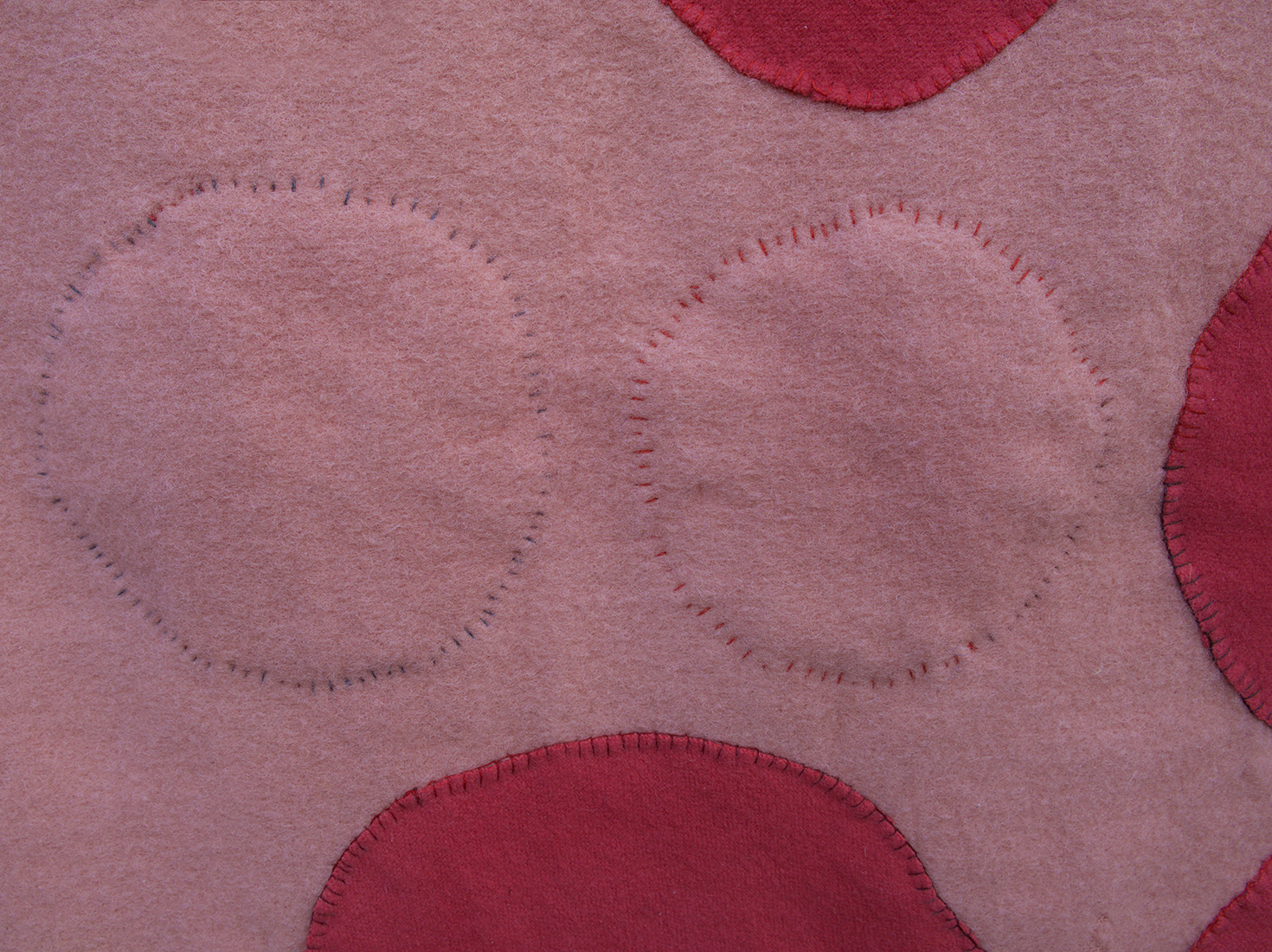Menopause and creative practice, Art as thinking.
This essay is adapted from a presentation I delivered at Talking Bodies Conference, University of Chester 2019.
I have been engaged in exploring menopause in a critical manner for over five years, sometimes alone and at times in the company of others.
Whilst reviewing information about menopause I found hundreds of images of women's bodies sliced in half, in an anatomical style. It seemed this was the pervasive representation of the menopausal female body. These images seemed to indicate a lack of lived experience and conversation. I noticed a focus on problematic symptoms both physical and psychological. Menopause brings reminders of loss, death and the foreclosure of possibility. For this reason, I wonder, is menopause culturally prohibited?
I am approaching Art as thinking, Art as knowledge. By this I mean that art making provides a curious and reflective conduit between conscious critical thinking, unconscious processes and emotional embodied experience that enables a multi-dimensional thought process to emerge.
It is a process of handling materials, imagining, playing, thinking. In this way I engage with my own subjective lived experience and relationship with my own body. And it is this lived subjective experience which is so absent from the information that I first encountered about menopause.
When I started making Art about menopause I focused on the ovaries, on menstrual blood and time. During menopause the body becomes precarious. The regularity and character of menstrual bleeding becomes unpredictable. As I considered the inevitable arrival of menopause, I became aware of the seductive power of hormones. The influence and impact of those chemical messengers on my body, my mood, behaviour and preoccupations. Knowing this would come to an end soon, I started to take more notice and used menopause as a subject for making.
Our bodies are doing things that we have only some awareness of. Countless cycles of filling and emptying, of preparation and readiness, of shedding and loss, time and time again. And in the meantime, we maintain careers and work, form social and close relationships and undertake domestic chores which are numerous and extensive. All this has been going on since I was 15 years old, and now it was going to stop which has become a moment of reflection.
For the purpose of this essay, I am going to discuss two projects: Treasure Boxes - a series of seven spaces. This piece is complete and Insecurity or Discomfort Blankets (working title) which is work in progress.
I will write about the Treasure Boxes first. I found two old toolbox in a shop. This prompted an idea around things, objects, no longer in use, being packed away and archived. I selected boxes that spoke of their previous purpose, imbued with a working life. Seven boxes in total.
“The casket contains all things that are unforgettable, unforgettable for us but also unforgettable for those to whom we are going to give our treasures. Here is the past, the present and the future condensed. Thus the casket is memory or what is immemorial” Bachelard, 1994:84.
I am treating the objects as if they are treasure and give them respect. Ovaries; I placed significance on these small temporary endocrine structures, the remains of ovulation. A scar involved in the production of essential hormones. Menopause starts when the ovary begins to fail and ends when the ovary lapses into inactivity.
Like a relic, the last blood clots are saved, preserved and resting on red velvet forever. Round discs flattened and empty, layered in a box reminiscent of wafers for communion and placed in a box with a canvas handle. Bed sheets stained with blood like rust, torn into swatches like sanitary pads, laid like pages of a book in a long box. Floorboard nails wrapped tightly in red cloth, bound with red linen thread, soaked in red muddy water, stacked in a box looking like tampons. A small box with nails holding the space open, as if they are teeth. An empty space no longer available. And finally, the missing box.
There is a box that became too heavy and could not be looked at. I had planned seven boxes. I prefer odd numbers. This box was going to be an absent space, the shape left behind when everything is taken out. I made it with plaster, I mixed up buckets of plaster. There was plaster and clay on the floor and in the air, it was a hue unruly mess. It wasn’t until I had exhausted myself and stepped back to view my creation that it occurred to me it was an impossible object.
The initial spark of inspiration for the Blanket project developed after reading a “Tweet”. It read “In many cultures, weavers will leave a deliberate mistake in their work. Depending on the place it may be to show humility before God or to avoid the weaver’s emotions becoming trapped in the item they created” #FolkloreThursdays. I work as if these ideas, and objects were always there, and I have revealed them to myself.
My sleep was poor, and I stopped dreaming. I imagined my dreams getting stuck in the fabric of my bedding. Again, I started with found objects, cotton sheets and old woollen blankets from charity shops. I had two that were perfect mirror opposites. The mixing and blending of the blankets became part of the process. Once I washed and aired the blankets with care, I cut them into smaller shapes, and they became objects. Cutting the fabric was an attack, an act of aggression.
I think of menopause as being like a wilderness and uncharted space, new unpredictable territory that I needed to learn to navigate and understand. I also thought about the effect of losing the protective influence of the hormones. I thought of the hormones as being like comfort blanket surrounding me in softness and safety. The blanket piece is my attempt to explore this uncertain exposed state and a process of mapping the unpredictable territory. I wanted to try to capture the dislocation of dreams as if they had become stuck in the blanket, and the sheet and bedding had fused. I think of these two blankets as part of a series. These are being shed and discarded as I move through menopause. This is potentially a performance piece.
Each space is embroidered with small layers and of marks and threads. Initially it took me a while to appreciate the slow small intervention of sewing. It allowed me time to think, to muse on the process of mourning and letting go of my former self. I was engaged in the job of mourning through the act of making this object.
In his book, “The New Black Mourning, Melancholia and Depression”, Darian Leader talks about how the process of public mourning has become erased and is absent in contemporary self-help books on grief but, when he looked more widely, he found it present in the arts. “Loss would be inscribed within the community through a system of rites customs and codes ranging from changes of dress and eating habits” In making these works, I am engaged in the process of public mourning and quietly challenging the secrecy and prohibition on menopause. I think of my blankets as a mourning piece.
I have used my menopause as source material, being curious about the changes and effects of my depleted hormones. My emotional state, my dreams or lack of them when I stopped sleeping. All of these and more have provided me with an opportunity to be witness to a significant all changing event in my life and body.
I wrote the above words about two years ago. I now find my attention turning closer to death and wonder if menopause is an opportunity to rehearse and to prepare to face into death and the loss of our elders. Taking up a new role and position in society. I have been thinking about the role of midwife, a wise woman present at birth, and wondering about a wise woman present during dying and death.



















